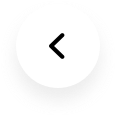Croatia/Austria
Numen/ For Use is a collective working in the fields of conceptual art, scenography, industrial and spatial design. The group first formed in 1998 as a collaborative effort of industrial designers Sven Jonke, Christoph Katzler and Nikola Radeljkovi? under the banner For Use. In 1999, they establish Numen as a collective identity covering all projects actualised outside the sphere of industrial design. The group's early enterprises are characterized by experiments with impersonal design and radical formal reduction, deeply rooted in the tradition of high modernism and mainly applied to various synergetic total-design projects in Croatia. From 2004 onwards, after setting up a large scale site-specific project for the production of “Inferno” in the National Centre for Drama in Madrid, Numen/ For Use become intensely involved with scenography. Since 2008. the collective turns its focus towards configuring objects and concepts without a predefined function, an activity resulting in the more hybrid and experimental works.Parallel to these publicly exposed ventures, the group wins several international awards for their accomplishments in the field of industrial and set design.
A dialectical biography
More than a decade ago, in the end of the 1990s, when Numen/ For Use first appeared on the Croatian design scene, country's once progressive vein of product design has long since receded into obscurity or was simply non-existent, with the media and visual communications largely imbued in eclectic, unconsolidated mediocrity driven by the nascent impulses of populist consumerism.
In a decidedly transitional environment of post-war anomie, where context was lacking and content seemed flimsy, arbitrary and irrelevant – a justifiable urge for some sort of coherence or structure emerged in the various aspects of human endeavor, be it artistic, intellectual or political. The state of overall cultural vacuum demanded revision of principles on a large scale, but also within the confines of the estranged discipline. The time was ripe to either start looking elsewhere for influence and exemplars or to attempt at formulating discourse Ex-Nihilo.
In the first effort to posit a certain basis of their approach, the group of then freshly graduated industrial designers, comprising three founding members - college friends Sven Jonke, Christoph Katzler and Nikola Radeljkovic - adopts the provisional name For Use to emphasize their, in the late 90s, almost regressive belief in the starkly utilitarian and functionalist core of product design. In pursuit of heroes, inspiration and intellectual precedents they delve deep into the first half of the departing century, towards the old canons of Bauhaus, Malevich, Russian constructivism and European abstract and concrete art but also into post war America, with its exotic fruit of wild frontier essentialism, conceptual art, Sol LeWitt, James Turrell, Mies Van Der Rohe and Rothko.
From 1999, and parallel to the already thriving For Use furniture design commissions in Italy, the collective starts to engage, through their copious street connections, with Zagreb underground club and art scene, staging and art-directing various public projects, from exhibitions and trade-fair events to club nights and parties. At the time the group broadens its membership to incorporate two graphic designers - friends and accomplices Jelenko Hercog and Toni Uroda, morphing through this expansion into a proper interdisciplinary design unit. The entire fellowship continues to operate as a tightly knit community of mutually corrective enthusiasts, who share both work space and living space, while disclosing the manner, lifestyle and fanaticism of a guerrilla brigade.
Prior to the opening of the 34th Zagreb Salon in 1999, whose setup and art-direction was the group’s first total design project – to somehow distinguish this part of their activity, from the “For Use” signed work in industrial design, they come up with a new nom de guerre to be added to the current title: Numen.
Numen (noumenon) is a word derived from the Kantian Theory of Knowledge signifying a thing viewed as a purely transcendental object.
Reinvented as Numen/For Use, the group demonstrated their dual, bifurcated identity; the double-barreled name suitably reflecting the inner dialectics which was to become the paradigm and the driving force of their future work and method.
For Numen, the sober and honest cult of functionalist minimalism reigned paramount, with all attempts at inconsistent artistic or impromptu solutions shunned and cut at the root. The accepted methodology favored a clear line of causality, devoid of arbitrariness, uncertainty or chance. At this point the group sees in design process less an art or a technique and more a surgery upon phenomenal reality that must be performed with strict determination and a carefully sharpened scalpel. Tasks are never approached lightly but with exploratory rigour, cerebral control and grit, occasionally teetering on the verge of pedantry.
The new methodology placed more emphasis on the process than on the result, focussing on experiment rather than revelation, allowing bastardizations and overlapping of fields of activity, creating context where a chair can become a leitmotif for stage design, where objects expand into architecture and scenography turns into an installation. This disciplinary intermeshing, this interstitial space that opened between design, scenography, architecture and art became a great new playground for testing out singular methods on the expanding substratum of different media.
When discussing their methodology in hindsight, Numen like to point out the persistency of the inner dialectics entrenched at the root of the their production, which manifests itself through a constant concurrence of the impulse towards order and the compulsion to transgress and give themselves over to chaos. This internal tension is perhaps characteristic for the field of design or the applied arts yet in the case of Numen/For Use it embodies the crucial creative dynamics within the group - the very poles of which are reflected in their hyphenated n ame and geographical split.
An uneasy yet productive oscillation between the notions of art and function, poiesis and techné, matter and ideal, reduction and excess, design and theatre - is resolved through a process akin to Hegelian sublation, where both aspects of a dialectical exchange are subsequently overcome and preserved. In this story of unflinching advancement and constant dynamic movement towards unity, difference is turned into contradiction, contradiction into reconciliation and a biography into dialectical biography.
For Numen there are no unbeatable rules or ossified principles in either life or design, but a continuous research that is in itself developmental and generative, reflecting in its unfolding spiral the ultimate constancy of flux.
(Extract)
By Ivana Jonke









